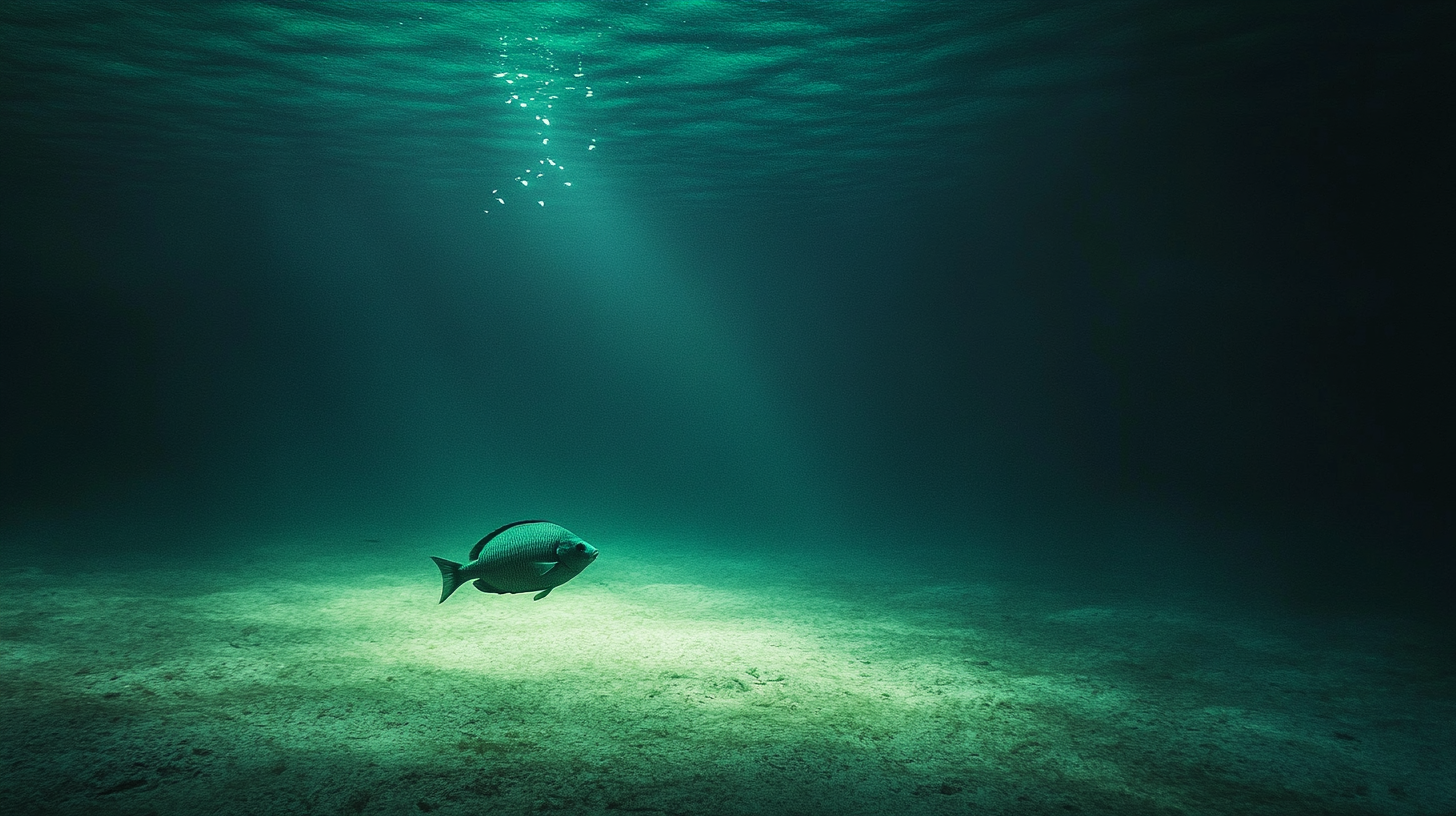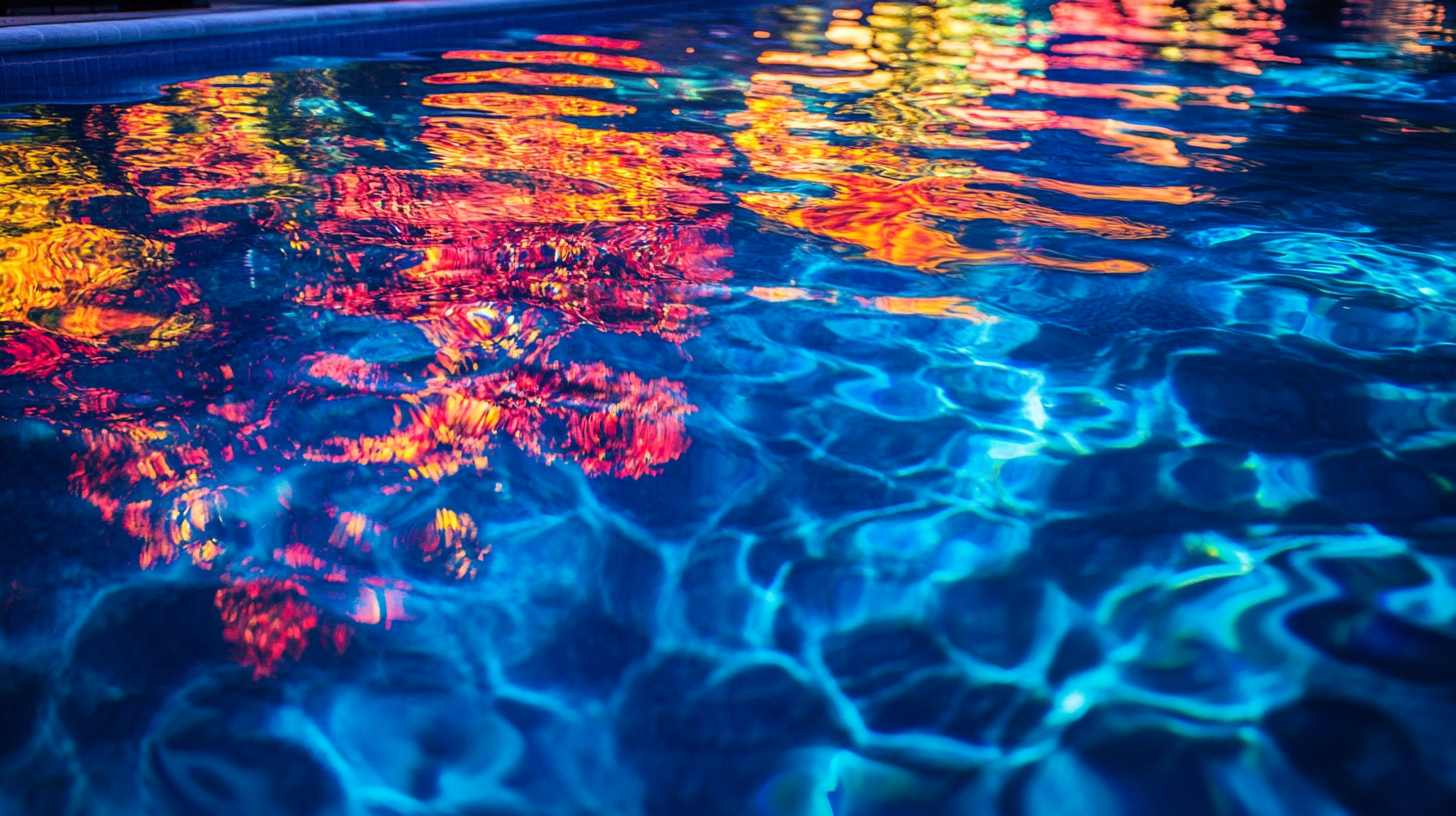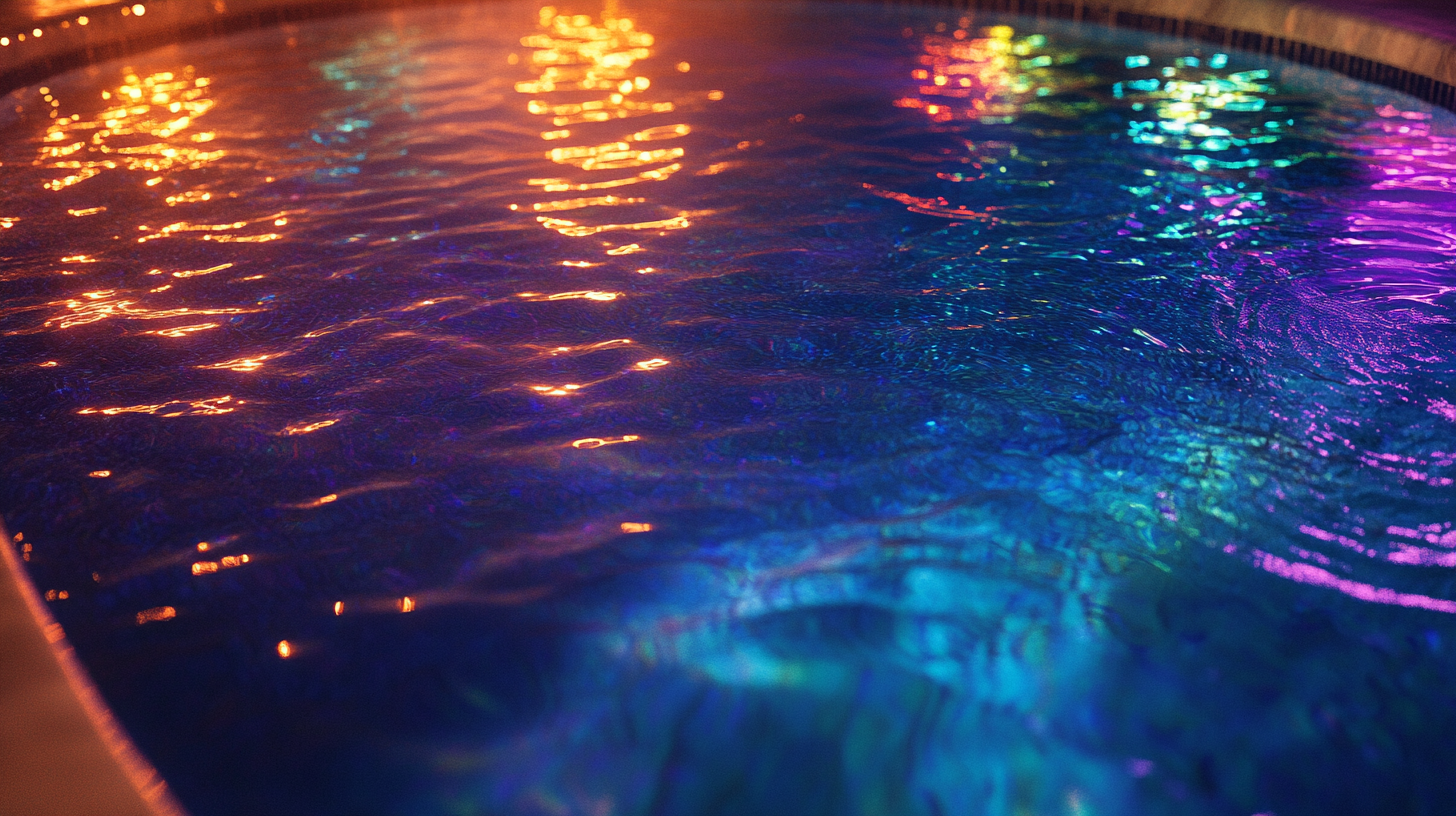Are colored underwater boat lights safe for marine animals?
Underwater lighting has grown in popularity, especially among boating enthusiasts, for its ability to enhance the visual appeal of a vessel at night. But these twinkling lights serve more than just an aesthetic purpose. While they certainly add a dramatic flair to the ocean’s depths, they are also highly functional, providing crucial visibility in dark waters. Whether enabling night fishing, making it easier to spot potential hazards, or simply improving the ambiance for an evening cruise, underwater lights have a variety of practical applications.
Modern underwater lighting systems range from basic white to a full spectrum of colored lights, each designed for specific scenarios or personal preferences. For instance, blue lights are often chosen because they penetrate the water more effectively than other colors, providing better visibility in certain conditions. On the other hand, green lights are popular among anglers because they attract plankton, which in turn draws in fish — a feature increasingly sought after in recreational fishing.
But with great features come important considerations, particularly concerning the safety of marine animals. While these lights can undoubtedly offer a unique experience, understanding their purpose also involves recognizing the potential impact they might have on the aquatic environment. By knowing why and how to use these lights, boat owners can enjoy the benefits while also being mindful of their surroundings.
Impact of colored lights on marine life
The question of how colored underwater lighting affects marine life is increasingly relevant as these lights become more widespread. Each color of light has a different impact on marine animals, largely depending on the species and its sensitivity to specific wavelengths. For example, certain wavelengths may attract small fish but repel larger predators, disrupting the natural food chain. This can have a ripple effect on the entire ecosystem, resulting in unintended consequences for marine animals that rely on a balanced environment for feeding, mating, and other essential behaviors.
One of the most noticeable impacts is the way different colored lights can alter nocturnal behaviors among marine species. Many marine animals are highly sensitive to light because they live in environments where natural light is limited, especially in deeper waters. The introduction of artificial lights, particularly colored ones, can interfere with the natural cycles of these creatures. For instance, some species of fish and invertebrates may mistake artificial lights for the bioluminescence emitted by prey, leading them to waste precious energy pursuing false targets. In some severe cases, prolonged exposure to certain lights may even cause disorientation or stress, adversely affecting the overall health and behavior of these creatures.
But it’s not just the small fish that are affected. Larger animals, such as dolphins or sea turtles, are also impacted by these underwater lighting systems. Sea turtles, particularly during their hatching phase, are highly susceptible to light pollution. Newly hatched sea turtles naturally move toward the brightest light, which historically would have been the moonlight reflected off the ocean. However, artificial colored lights can mislead them, causing them to move in the wrong direction and significantly lowering their chances of survival. Even marine mammals, which rely on echolocation and other specialized senses, can experience confusion or a temporary loss of navigation capabilities when exposed to intense colored lights.
Another critical aspect is the potential for these lights to disturb breeding patterns. Many marine animals, including fish and corals, have reproductive behaviors that are timed with the lunar cycle and the associated light levels. Introducing artificial lights can disrupt these patterns, resulting in a delay or even a complete halt in reproduction. This is particularly concerning for species that are already under threat due to overfishing, habitat destruction, or climate change.
While some species can adapt to changing light conditions, others are less resilient. High-intensity lights, in particular, can alter the distribution of species in an area. Predatory fish may congregate around bright lights, leading to increased predation and a decrease in the local populations of prey species. Over time, these disruptions can lead to a significant imbalance in the marine ecosystem, with some species becoming overly dominant while others decline.
Light wavelengths and animal behavior
Marine animals are finely tuned to the natural light environment of their underwater habitats, and any deviation from this norm can substantially alter their behavior. The key factor here lies in the wavelengths of light emitted by underwater lighting — not all wavelengths have the same effect on marine life. For instance, shorter wavelengths like blue and green light penetrate water more deeply than longer wavelengths, such as red and yellow. This penetration depth means blue and green lights are more likely to be encountered by marine organisms, which have evolved to leverage or avoid specific light spectrums for survival.
Different species of marine animals have varying sensitivity to light wavelengths, adjusting their behavior accordingly. Fish, for example, have specialized photoreceptors in their eyes that allow them to detect certain colors more efficiently. Some predatory fish use bioluminescence, which emits a blue or green hue to blend in with the natural lighting of the ocean. When underwater lighting in these color ranges is introduced, it can either attract these predators, leading them to hunt in unfamiliar territories, or repel prey that would otherwise be visible in ambient light conditions. This alteration can lead to an ecological imbalance, where certain species might become more vulnerable to predation or struggle to find food.
Corals, another crucial component of marine ecosystems, also respond to specific wavelengths of light. They rely on a symbiotic relationship with zooxanthellae, photosynthetic algae that live within their tissues. The algae require specific light conditions to photosynthesize effectively, which in turn affects the health of the coral. If underwater lighting alters these conditions by introducing wavelengths that are too intense or unnatural, it could disrupt this delicate balance, leading to reduced coral growth or even bleaching. This could be particularly detrimental in areas where the coral reefs are already under stress due to rising ocean temperatures and other environmental factors.
Beyond direct behavioral changes or physiological stress, the introduction of colored lights at different wavelengths can interfere with the natural rhythms of the ocean, such as the migration patterns of various marine animals. Many species rely on the moon and stars to navigate during their long migrations. Lights that mimic or overpower these natural cues could lead to disorientation, causing species like sea turtles, fish, or even whales to deviate from their normal routes, potentially putting them in harm’s way or leading them away from critical feeding or breeding grounds.
It’s also worth noting that the impact of underwater lighting isn’t uniform across all marine environments. Shallow waters, where light already penetrates easily, may see less dramatic effects than deeper waters, where even a small light source can make a significant difference. However, it’s precisely in these deeper environments that many sensitive species live. The introduction of artificial lights here can lead to far-reaching consequences, many of which we are only beginning to understand. Scientists are only just scratching the surface when it comes to how different light wavelengths affect marine animals, making it even more crucial for boaters and marine enthusiasts to consider the ecological implications of underwater lighting choices.
Regulatory guidelines and environmental standards
As awareness of the potential impacts of colored underwater lighting on marine animals continues to grow, regulatory guidelines and environmental standards have begun to play a more prominent role in shaping how and where these lights can be used. Various authorities and environmental organizations emphasize the importance of minimizing light pollution in marine environments to safeguard the delicate ecosystems that exist beneath the water’s surface.
Most regulatory guidelines are rooted in fundamental principles that aim to reduce unnecessary light exposure in marine habitats. For instance, the International Maritime Organization (IMO) and other maritime regulatory bodies have set forth guidelines that limit the intensity and deployment of underwater lighting systems, particularly in ecologically sensitive areas. These standards often specify the maximum allowable luminance, color temperatures, and usage hours for underwater lights to minimize disruption to marine life. Compliance with these standards is crucial for protecting vulnerable species and preserving the natural rhythms of marine ecosystems.
Some jurisdictions have gone further by establishing specific regulations that govern the use of colored lights in marine environments. For example, in certain coastal regions, the use of bright blue or white lights is restricted near coral reefs and marine protected areas to prevent further stress on these fragile ecosystems. In some cases, boaters are required to use only low-intensity, red, or amber lights, which have been found to have less impact on marine life due to their limited depth penetration and minimal effects on animal behavior. These measures are designed to balance the benefits of underwater lighting for human activities with the need to protect marine wildlife.
Local environmental agencies in coastal regions may also mandate that boaters and marinas undergo environmental assessment procedures before installing or operating any underwater lighting systems. These assessments typically evaluate the potential risks associated with artificial lighting, particularly in relation to key species and habitats in the area. In some cases, mitigation measures may be required, such as installing light shields to direct beams downwards and reduce light spillover, or using automatic timers to turn lights off during critical periods, such as during turtle nesting seasons or fish spawning events.
Public awareness campaigns play a crucial role in reinforcing the importance of adhering to these regulatory guidelines. Organizations such as the National Oceanic and Atmospheric Administration (NOAA) and World Wildlife Fund (WWF) often collaborate with local governments to educate boaters, fishermen, and coastal residents about the ecological impacts of underwater lighting. These campaigns highlight best practices for reducing light pollution, such as choosing dimmable lighting systems, using colors that are less disruptive to marine animals, and limiting the duration of light exposure.
For manufacturers of underwater lighting systems, adhering to environmental standards is not only a compliance issue but also an opportunity to innovate. Many companies now design lights specifically with marine safety in mind, offering features like adjustable color spectrum and intensity controls, which allow users to customize the lighting to specific environments and reduce harmful effects on marine wildlife. In some cases, lights are outfitted with sensors that automatically adjust brightness based on ambient light levels, ensuring that they brighten only when necessary, such as during night fishing or navigating through complex waterways.
While regulations and standards provide a framework for responsible underwater lighting usage, they are most effective when accompanied by a commitment from boaters and marine enthusiasts to act as stewards of the marine environment. By choosing lighting systems that meet or exceed environmental guidelines, following local regulations, and staying informed about the latest research on the effects of colored lights on marine life, individuals can enjoy the benefits of underwater lights without compromising the safety and well-being of marine animals.
Best practices for using underwater boat lights
When it comes to enjoying the aesthetic and functional benefits of underwater boat lights, it’s vital to keep best practices in mind to ensure the safety of marine animals and the preservation of their habitats. Here are some important tips to consider.
First and foremost, opt for underwater lighting systems that allow for adjustability. Many modern lights come with dimming options, which give you the ability to reduce the intensity of the light. Using lower-intensity lights not only minimizes the risk of startling or disorienting marine life but also reduces your energy consumption. Additionally, consider choosing lights with features that allow you to control the color spectrum. Some wavelengths, particularly those on the red or amber end, are less disruptive to marine animals. By selecting these colors or adjusting the intensity and timing of your lighting, you can enjoy your nighttime activities while minimizing harm to the ecosystem.
Placement of your lights is also crucial. If possible, direct your lights downward and shield them to minimize light spillover into surrounding areas. This technique is especially important when you’re anchored near coral reefs, nesting grounds, or other wildlife hotspots. It reduces the risk of drawing species away from their natural behaviors or habitats. Be mindful, also, of the depth at which your lights are installed. Lights placed too shallow or too deep can either affect a broader range of wildlife or penetrate into darker, more sensitive zones where certain species are not accustomed to artificial light.
Timing is equally important when using underwater lighting. Avoid prolonged use of lights, particularly in areas known for high biodiversity or during certain periods when wildlife is more vulnerable, such as fish spawning seasons or turtle nesting periods. Implementing timers or sensors that automatically switch off or dim the lights after a certain period can be a helpful tool in avoiding unnecessary light exposure. Not only does this practice help in conserving the surrounding environment, but it also extends the lifespan of your lighting systems.
Another best practice is to stay informed and adhere to any local or international regulations regarding the use of underwater lights. These guidelines often include restrictions on color, brightness, and usage times, particularly in areas designated as marine protected areas (MPAs) or other sensitive regions. Adhering to these standards is not only good for marine life but also ensures that you’re compliant with legal requirements, thereby avoiding potential fines or penalties.
Lastly, remain conscious of your surroundings. If you notice that your lights are attracting large numbers of fish, or if you observe unusual behavior among marine animals, consider reducing the brightness or turning off the lights. Observational vigilance is key to ensuring that your presence on the water does not negatively impact the marine ecosystem. Engaging in this practice not only heightens your awareness but also helps in maintaining a balanced marine environment, enabling future generations to enjoy the natural beauty of the sea.
Using underwater boat lights can be a delightful enhancement to your marine activities, but it comes with responsibilities. By carefully selecting and managing your lighting systems, you can enjoy the benefits while contributing to the safety and preservation of marine animals and their habitats.


